Castle History
King Henry II gifted Richard Talbot the lands and harbour of Malahide for his services to the crown in 1185.

History
History
Interactive Timeline
Interactive Timeline
Hover over the years to view more information
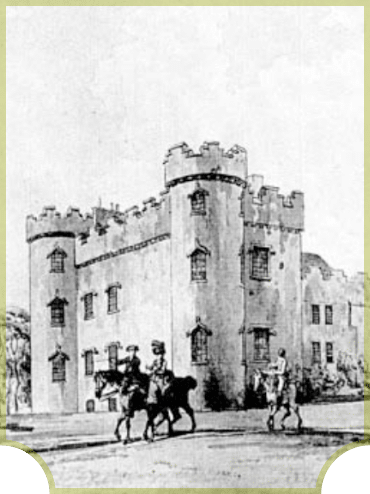
1189
Lordship
Confirmation of Lordship of Malahide granted to Richard Talbot
1475
Great Hall
A grand space for feasting and hosting courtly life at Malahide was built.
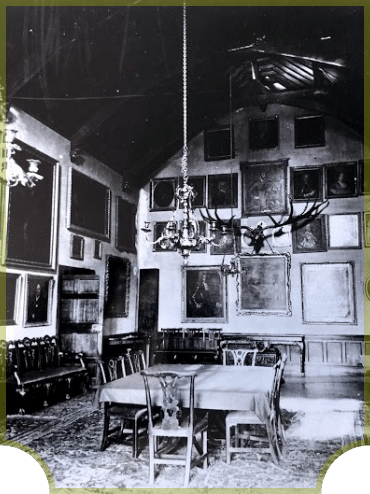
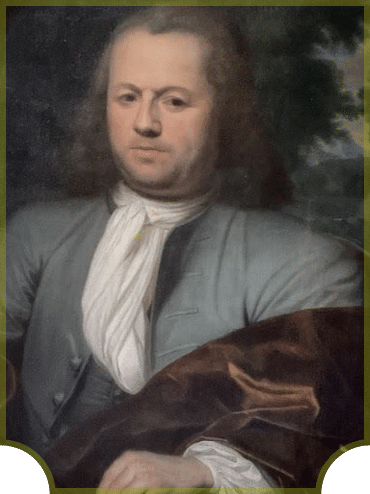
1649
Miles Corbet
Miles Corbet was granted the confiscated Malahide Castle and lands, the only interruption to otherwise unbroken 800-year occupancy by the Talbot family.
1689
Richard Talbot
Richard Talbot of Malahide appointed Auditor General of Ireland
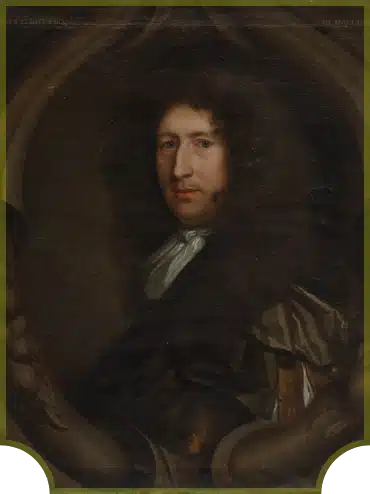
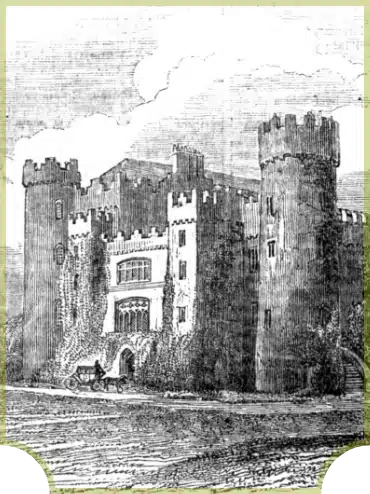
1765
Marriage
Col. Richard Talbot of Malahide, married Margaret O’Reilly of Ballinlough Castle.
1833
Drawing Rooms
The iconic Drawing Rooms were redecorated to celebrate creation of the peerage ‘Baron Talbot of Malahide’ two years previously.
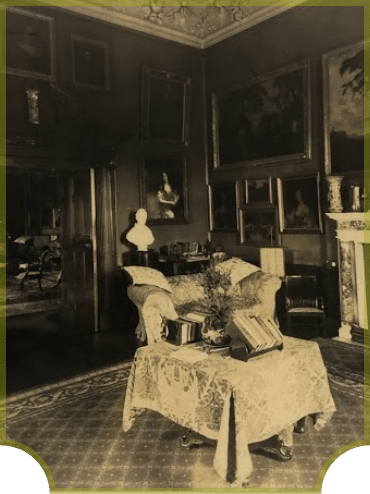
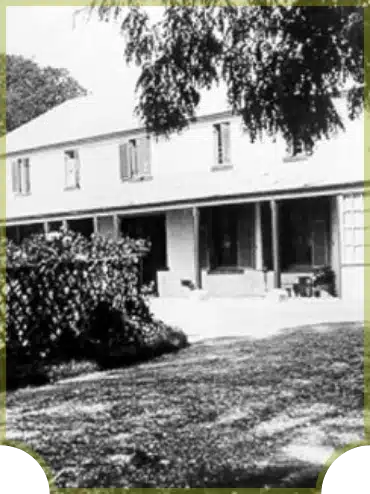
1845
William Talbot died
22 Dec 1845 – William Talbot died in Malahide, Tasmania, Australia where he had established a vast sheep farm
1924
6th Baron Talbot of Malahide
James Boswell Talbot, 6th Baron Talbot of Malahide married Miss Joyce Kerr. Joyce was the daughter of actor Frederick Kerr. Despite a 23-year age difference the couple were married for 24 years until Lord James died in 1948.
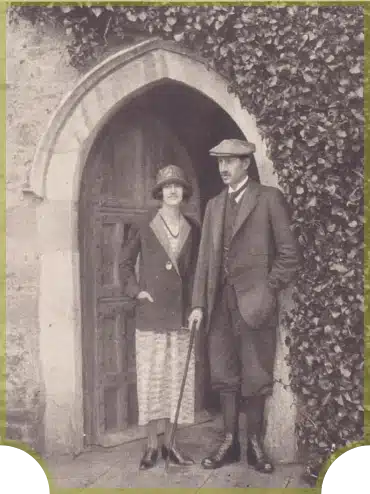
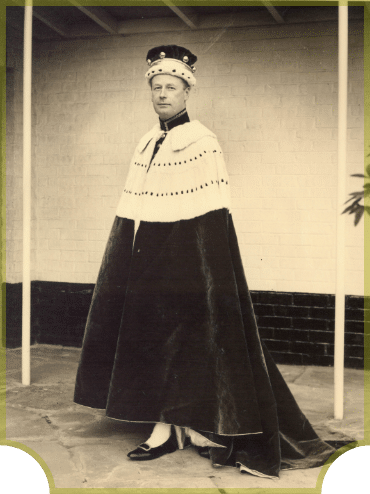
1949
Lord Milo
Milo Reginald Talbot inherits the castle and its contents after death of his cousin, he retires from British Foreign Office in 1956 to dedicate more time to the Botanic collection he is building in the gardens.
1976
Big Sale
10 May 1976 – sale of contents of Malahide Castle after death of Lord Milo three years previously.
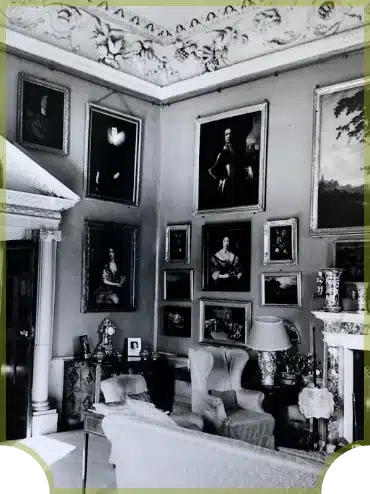
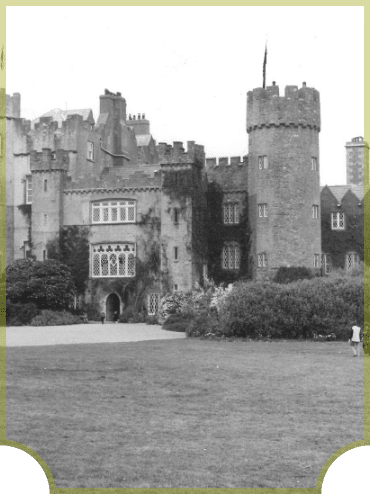
1977
Public Opening
12 June 1977 – Malahide Castle opens to the Public
2012
Refurbishment
3 February 2012 – Following renovation the Visitor Centre opens in the historic courtyard
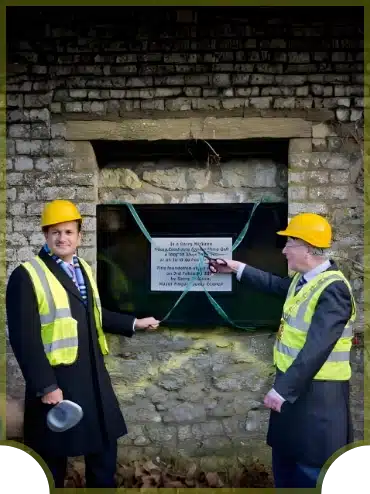
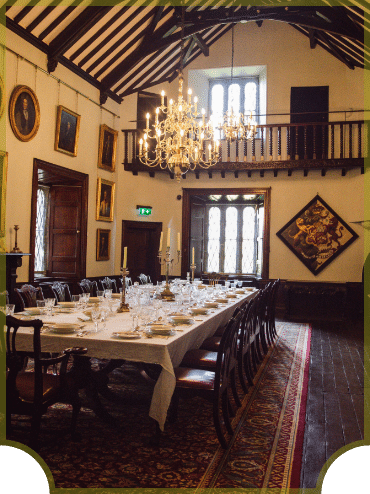
2022
Conservation
16 Sep 2022 – Great Hall reopens after significant conservation of the built fabric and rehung with original artworks on loan from National Gallery of Ireland.

Significant Moments
1185
12th Century onwards
Talbot's tied to Malahide history
for services to the crown in 1185.
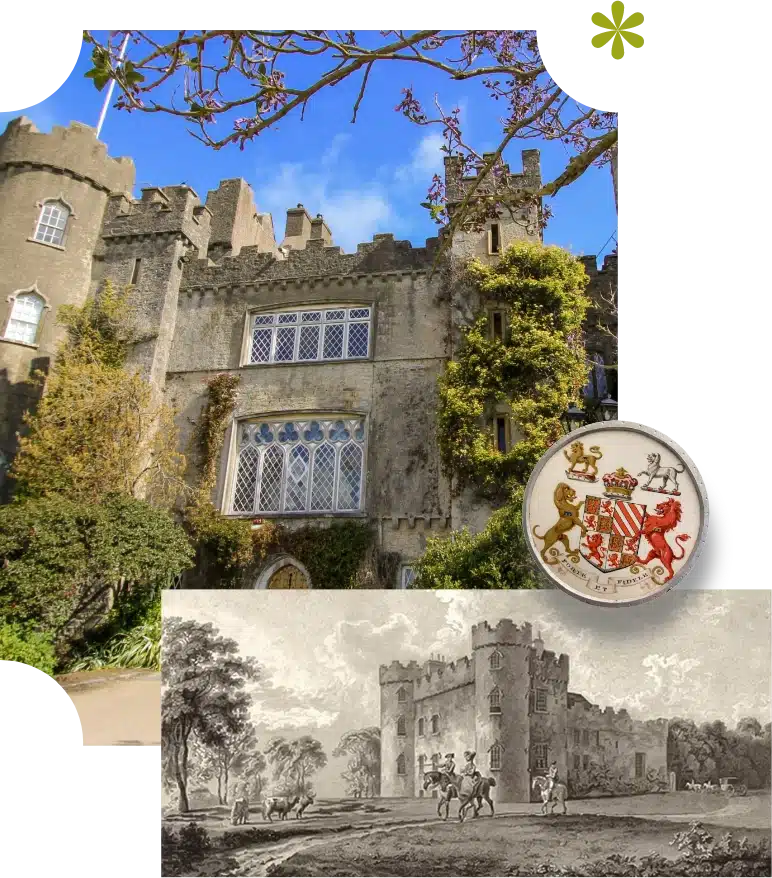
King Henry II gifted Richard Talbot the lands and harbour of Malahide for his services to the crown in 1185. From that point on, the Talbot family became intertwined with Malahide’s history and development. The earliest believed stone fortress at Malahide was an Anglo-Norman tower house. From the 12th century onwards, this stronghold was continually expanded by the Talbot family. Rooms were modified, fortifications developed and many embellishments to the interior were added until the castle took on its current form.

‘the interior of the mansion affords many objects of gratification’.
– J.N Brewer, 1825
1649
12th Century onwards
The Talbots family held many roles of power in church and state as well as being Hereditary Lords Admiral of Malahide, historically a booming seaport.
Over eight centuries their tenure at Malahide Castle was broken for only a brief interlude between 1649 and 1660 when their lands were seized by Cromwellian soldiers and the castle was occupied by Miles Corbet, Regicide and Lord Chief Baron of Ireland.
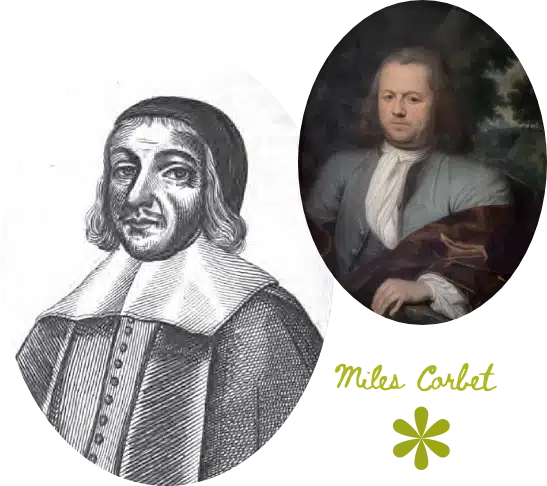
1976
the 7th Baron Talbot
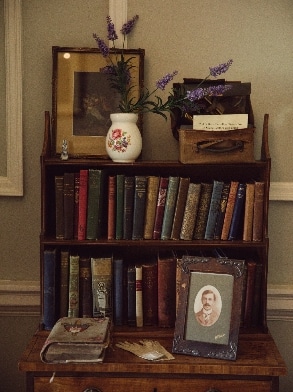
By 1976, Malahide Castle was one of the oldest inhabited houses in Ireland. But after the sudden death of Lord Milo Talbot in 1973, his sister Rose was faced with a substantial bill for death duties, forcing her to sell the Castle and lands
In the course of eight centuries my family have built up here something which, I think, is unique both historically and aesthetically and thus worth making a serious attempt to preserve’ – Lord Milo Talbot, 1973
Malahide Castle, Gardens and Demesne were acquired by Dublin County Council (now Fingal County Council) in 1976 and opened to the public shortly after. Since then, Malahide Castle has continued to play an important part in Ireland’s political and social landscape, hosting international leaders and summits, and welcoming thousands of local and international visitors each year.
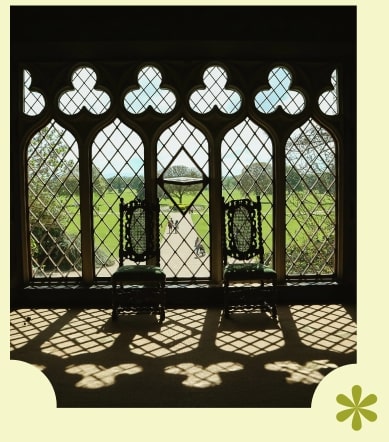

The Great Hall
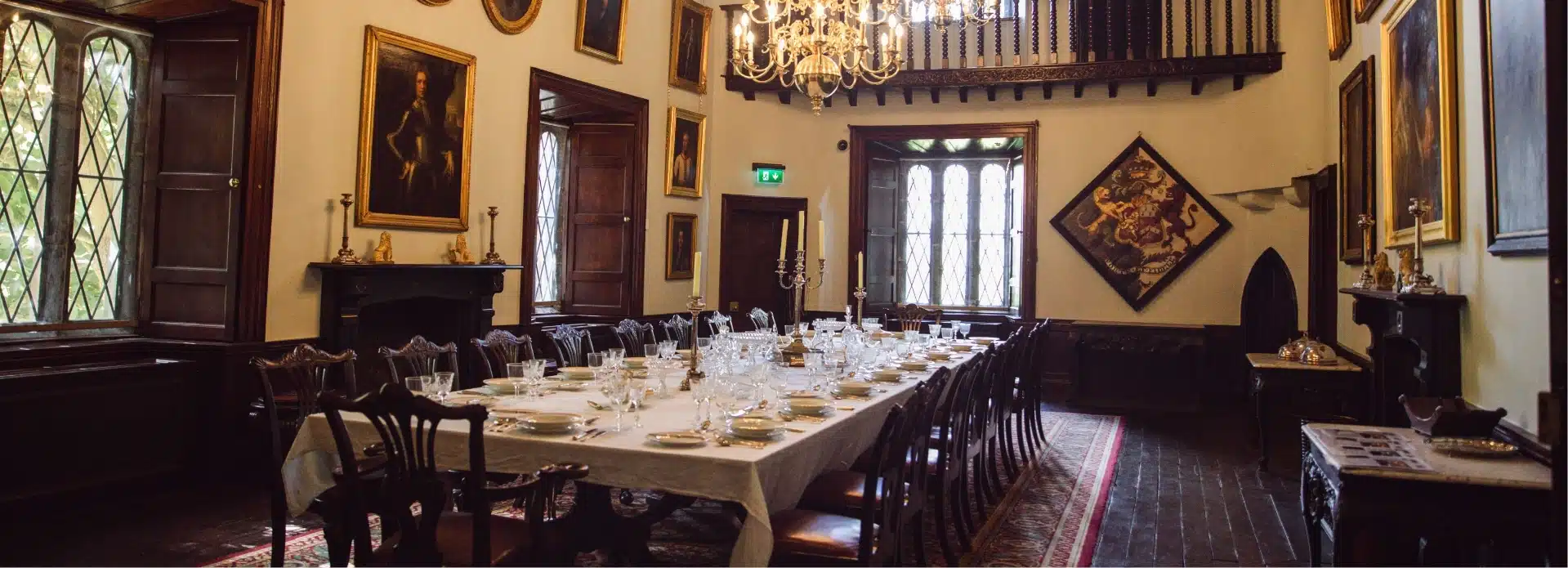
Malahide Castle stands as a proud testament to centuries of Irish history.
From the Flemish seventeenth-century carvings in the Oak Room, to the opulent Georgian drawing rooms to the Edwardian bedrooms, Malahide features some of the best periods of Irish craftsmanship. Dating back to 1475, the Great Hall was the hub of the medieval castle.
The Great Hall would have held feasts and banquets for Lords and dignitaries and today, is a rare example of a Gaelic feasting room. It would have been the location for Talbot to preside over a medieval court.
In 1825 it was extensively remodelled in a neo-gothic revival style by the 2nd Baron Talbot and was sensitively conserved in 2022 to honour this history.
The Great Hall
Malahide Castle stands as a proud testament to centuries of Irish history.

From the Flemish seventeenth-century carvings in the Oak Room, to the opulent Georgian drawing rooms to the Edwardian bedrooms, Malahide features some of the best periods of Irish craftsmanship. Dating back to 1475, the Great Hall was the hub of the medieval castle.
The Great Hall would have held feasts and banquets for Lords and dignitaries and today, is a rare example of a Gaelic feasting room. It would have been the location for Talbot to preside over a medieval court.
In 1825 it was extensively remodelled in a neo-gothic revival style by the 2nd Baron Talbot and was sensitively conserved in 2022 to honour this history.
‘The Great Hall.. as it stands today… is one of Ireland’s most impressive mediaeval rooms.’
– Knight of Glin (1976)
Today, the hall is home to one of the most important collections of Jacobite portraits, displayed in their original setting, and features some of the 31 portraits acquired by the National Gallery of Ireland from the Talbot Family, which are on loan and thus preserved in situ.
‘Vital is the light that this collection throws on the beginnings of easel paintings in Ireland’
- Oliver Miller
Redecorated
Redecorated in 1833 shortly after Margaret Talbot (née O’Reilly) was created Baroness Talbot of Malahide, the drawing rooms in the west wing feature the idiosyncratic colour, popularly known as ‘Malahide Orange’.
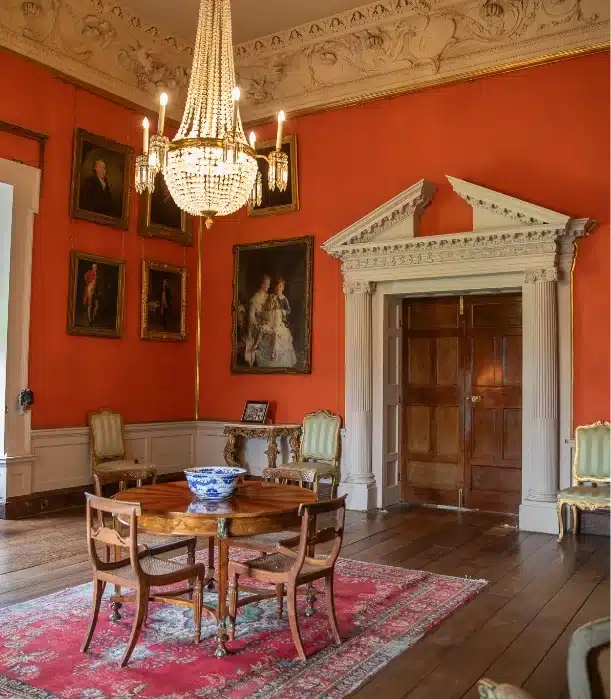
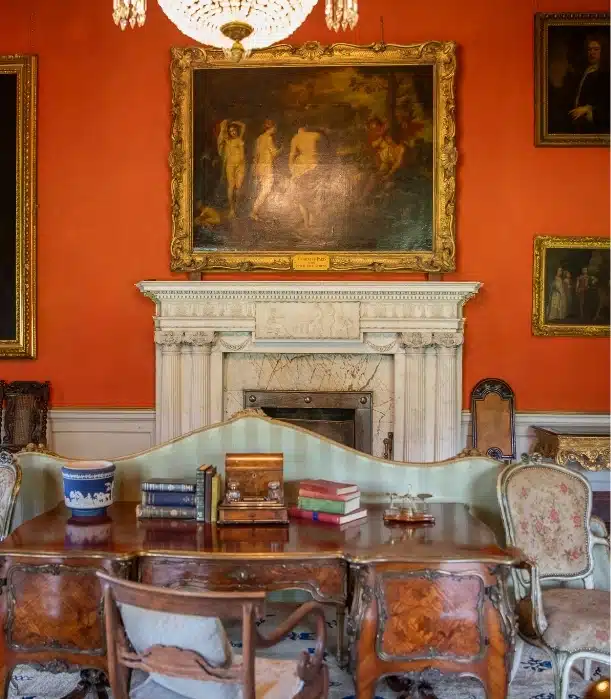
Experience the splendour of the Drawing Room, a masterpiece of 18th-century Irish deesign
– John Cornforth, 1977


